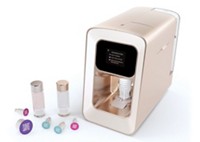Advertisement
Grab your lab coat. Let's get started
Welcome!
Welcome!
Create an account below to get 6 C&EN articles per month, receive newsletters and more - all free.
It seems this is your first time logging in online. Please enter the following information to continue.
As an ACS member you automatically get access to this site. All we need is few more details to create your reading experience.
Not you? Sign in with a different account.
Not you? Sign in with a different account.
ERROR 1
ERROR 1
ERROR 2
ERROR 2
ERROR 2
ERROR 2
ERROR 2
Password and Confirm password must match.
If you have an ACS member number, please enter it here so we can link this account to your membership. (optional)
ERROR 2
ACS values your privacy. By submitting your information, you are gaining access to C&EN and subscribing to our weekly newsletter. We use the information you provide to make your reading experience better, and we will never sell your data to third party members.
Consumer Products
Croda to acquire maker of biobased ceramides
Purchase will deepen Croda’s lipid offerings for personal care and medicine
by Craig Bettenhausen
February 10, 2023
| A version of this story appeared in
Volume 101, Issue 6

The specialty chemical firm Croda will purchase the personal care ingredient unit of South Korea’s Solus Advanced Materials for $280 million. The business, Solus BioTech, uses fermentation to make lipids used in lotions, cosmetics, and hair care products. Solus Advanced Materials will retain its electronic materials businesses.
Solus BioTech’s key products are ceramides, a class of more than 300 lipids that are abundant in skin cell membranes and the intercellular space. Overall, ceramides account for about 50% of the molecules in human skin. Scientists are exploring the role ceramides play in cellular communication and programmed cell death. Lotions and cosmetics featuring ceramides usually sport claims about moisturizing action and wrinkle reduction.
Ceramides generally consist of a sphingoid base connected to a fatty acid. Solus BioTech’s primary products areceramide NP and ceramide AP, which combine phytosphingosine with stearic acid and α-hydroxyl stearic acid, respectively. Solus BioTech also sells phytosphingosine by itself as well as hydrogenated lecithin, both of which are also used in personal care.
Solus BioTech is a major producer of biotech-derived ceramides and has a supply agreement with L’Oréal, according to the investment banking firm Jefferies. It also produces biobased phospholipids. Croda is paying a high price for a business with annual sales of only about $34 million, but the strong growth prospects for ceramides, along with a good fit with Croda’s existing business, make the deal reasonable, Jefferies adds.
Jefferies says Solvay had previously won a bidding process for Solus BioTech, but the firms weren’t able to agree on final terms. According to a published report, other bidders at the time included Evonik Industries, BASF, and ADM, all of which are active in personal care.
Croda is a major supplier of surfactants and other cleaning and cosmetic ingredients; it is also involved in pharmaceutical chemicals. The firm says Solus BioTech’s phospholipid portfolio will overlap well with Avanti Polar Lipids, a maker of lipids for messenger RNA vaccines and controlled-release drugs that Croda acquired in August 2020.
In addition to its established ceramides and phospholipid businesses, Solus BioTech is developing a fermentation route to retinol, a high-margin specialty chemical that is used in cosmetics as well as in health-care and pharmaceutical applications.
Though ceramides occur naturally in plant, animal, and fungal tissues, most of the ceramides on the market today are prepared by chemical synthesis. Croda’s purchase is in keeping with an industry-wide race to offer biobased ingredients in response to strong demand from makers of personal care products.
The personal care ingredient maker Givaudan, for example, just unveiled its own retinol produced via fermentation and plans to promote it at the upcoming In-cosmetics global trade show. Retinol, also known as vitamin A, is hailed as an antiaging ingredient. It is also normally prepared at industrial scale via chemical synthesis.
CORRECTION:
This story was updated on Feb. 22, 2023, to correct an error in the caption for the ceramide NP structure. The sphingosine group is red and the fatty acid is blue, not the other way around.




Join the conversation
Contact the reporter
Submit a Letter to the Editor for publication
Engage with us on Twitter